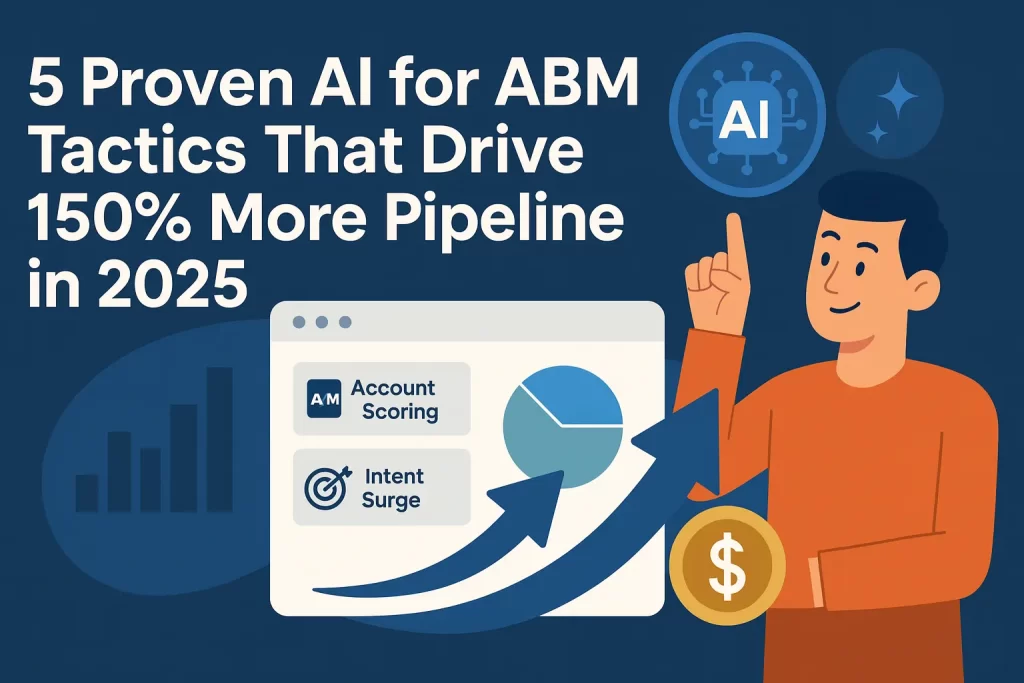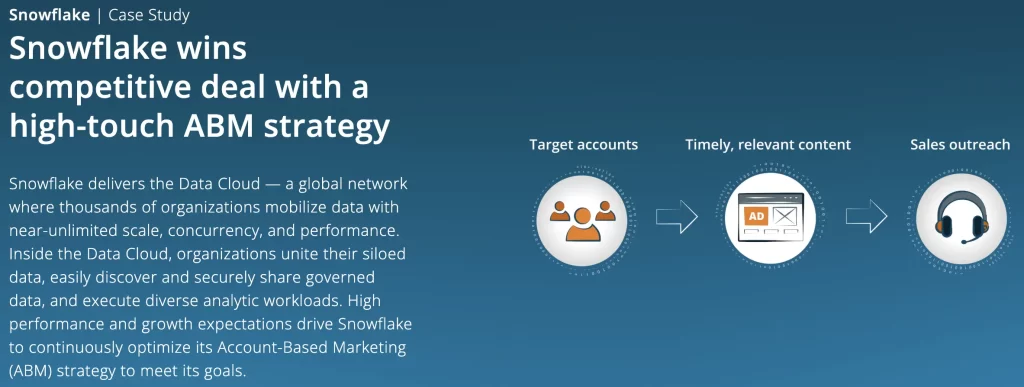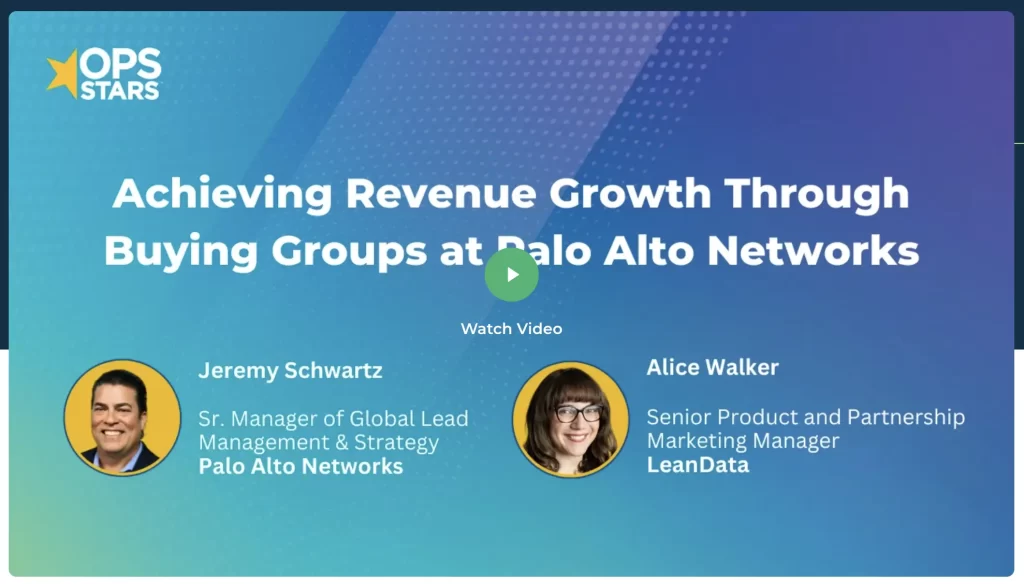
Are you struggling to implement AI for ABM in ways that actually transform your pipeline instead of just collecting engagement metrics that never convert?
You’re not alone. Traditional ABM approaches waste 60% of marketing resources on accounts showing zero purchase intent. Meanwhile, your competitors leverage AI for ABM to identify and engage high-intent buyers before you even know those accounts exist.
The revenue gap widens daily. Organizations implementing AI-powered ABM strategies report 50% increases in sales ROI and pipeline conversion rates. Traditional programs increasingly struggle to justify their budgets. With 84% of B2B marketers now using AI for ABM and intent-based personalization, remaining on the sidelines puts your quarterly targets at serious risk.
Here’s what you’ll discover:
- 5 proven AI for ABM tactics that convert engagement into measurable pipeline
- Ready-to-deploy implementation frameworks you can activate this quarter
- Real-world case studies from companies exceeding 150% of their revenue goals
- Specific platform recommendations and integration approaches driving verifiable ROI
Your demand generation metrics will show immediate improvements. You’ll see dramatic lifts in intent-to-MQL conversion rates, account engagement velocity, and pipeline influence attribution. These hard revenue metrics provide compelling AI for ABM ROI evidence for your executive leadership team.
Which AI ABM Platform Should You Choose for Each Tactic?
| AI Use Case | ABM AI Tactic | ABM Platform | Proven Result |
|---|---|---|---|
| Stop wasting time on cold accounts | Intent Data Prioritization | 6sense or DemandBase | 67% higher conversion |
| Predict which accounts will buy | Predictive Analytics | Salesforce Einstein | 260% more lead conversions |
| Convert more website visitors | Dynamic Personalization | Clearbit + Mutiny | 10% more pageviews |
| Scale personalized content | AI Content Generation | Copy.ai | 25% engagement lift |
| Coordinate all touchpoints | Campaign Orchestration | RollWorks | 6x better ROI |
1. AI Predictive Account Scoring
Manual account selection wastes marketing budgets on low-potential prospects. This outdated approach leaves revenue-ready buyers undiscovered in your database. Sales and marketing misalignment follows.
Predictive account scoring powered by AI transforms this broken process. Advanced machine learning models analyze your historical win/loss patterns alongside real-time intent signals. These systems generate dynamic account scores that update daily inside your CRM.
Your team gains immediate visibility into which accounts show active purchase intent. The AI explains exactly why each account received its score through transparent reasoning. This creates alignment between your marketing and sales teams.
The ROI impact proves compelling. Bombora customers implementing intent-based predictive scoring reduced their cost-per-lead by 50%. LinkedIn’s Account Prioritizer engine delivered 8% higher renewal bookings in controlled tests.
AI-Powered Predictive Scoring Implementation Framework
- Export 12-18 months of closed opportunity data to train your initial model.
- Refresh weekly.
- Create tiered response plans based on score segments
- A-scores receive immediate SDR outreach.
- B-scores trigger personalized advertising.
- C-scores enter nurture campaigns.
Example of AI-Powered Predictive Scoring
Sandler Training implemented 6sense predictive scoring with impressive results. Their ABM strategy yielded a 30% increase in marketing-influenced pipeline in just six months by targeting accounts most likely to buy based on AI-identified intent signals.

2. Intent Signal Mining
Marketers waste precious resources targeting accounts showing zero purchase interest. Your budget evaporates on prospects with no active buying intent. The impact devastates your metrics.
Real-time intent-signal mining transforms this broken approach by leveraging ABM intent data. AI platforms now monitor thousands of B2B websites to identify when target accounts start actively researching solutions like yours. These systems detect topic-specific research spikes and automatically trigger account “surges” in your CRM.
Your marketing suddenly becomes perfectly timed. Outreach lands precisely when prospects actively seek solutions rather than disrupting their normal workflow. This intelligence eliminates guesswork in prioritization.
The ROI proves compelling. Forrester’s Total Economic Impact study reveals that Bombora intent data drives 18% higher conversion rates and 30% faster sales velocity when used to prioritize outreach efforts.
Implement this approach strategically. Set specific active research thresholds that automatically enroll accounts into your high-touch sequences. Skip everything below your threshold to preserve budget for genuine opportunities.
AI-Powered Intent Signal Platforms
- Bombora Company Surge® delivers the industry standard for third-party intent
- 6sense combines surge intensity with AI-predicted buying stage.
- G2 Buyer Intent captures bottom-funnel signals from software comparison activity.
Example of AI-Powered Intent Signal Mining
Snowflake transformed their ABM strategy using intent-signal mining from both 6sense and Bombora. Their ABM team conducts biweekly meetings to review intelligence reports highlighting which high-propensity accounts show active research intent. This approach enabled successful expansion from US to global markets with hyper-personalized outreach based on actual buyer interest.

3. Personalized Content Generation
Creating personalized content at scale overwhelms marketing teams today. Your designers cannot produce assets for every persona across funnel stages and industry verticals. Static content becomes outdated before campaigns even launch.
Generative AI transforms this impossible task into an automated reality. Advanced models like GPT-4o and Imagen 2 now dynamically adjust headlines. They swap images. They personalize CTAs. All content adapts instantly to each visitor’s industry role and buying stage.
Your personalization scales without growing your team. Every account receives tailored messaging that speaks directly to their specific challenges. This capability eliminates the traditional tradeoff between personalization quality and campaign scale.
The performance gains prove remarkable. RebelMouse implementation of AI-generated templates increased click-through rates by 159% in just 30 days compared to traditional A/B testing approaches.
AI-Powered Personalized Content Generation Implementation Framework
- Map your content blocks to particular intent.
- Connect your personalization content blocks directly to intent signals.
- When an account shows research interest in specific topics your content automatically adjusts to emphasize those exact pain points.
Several platforms now enable this capability. Mutiny offers no-code website personalization with AI-generated variations. Phrasee delivers LLM-powered email subject lines with automated testing. Adobe GenStudio provides enterprise-scale brand-safe image and copy generation.
Example of AI-Powered Personalized Content Generation
Snowflake implemented Mutiny’s AI-powered personalization across their ABM program. The cloud data platform reported an 80% increase in average contract value after implementing dynamic content that automatically adjusted based on visitor industry and intent signals. Their personalized website experiences directly contributed to 150% more sales-qualified pipeline by delivering precisely targeted messaging to key accounts.

4. Buying Committee Mapping
Enterprise deals die when you focus on just one contact. The average B2B purchase involves 10+ stakeholders. Your single-threaded deals stall without executive buy-in. Each missing committee member creates risk.
AI-powered buying-committee mapping transforms this broken approach. Advanced graph algorithms now crawl organization charts. They analyze email headers. They process LinkedIn connections. This intelligence automatically identifies critical stakeholders for every opportunity.
Your sales team suddenly gains complete visibility into entire buying committees. They can spot missing influencers and identify potential blockers. Sellers can also recognize executive champions. All this data syncs directly into CRM opportunities.
The revenue impact proves substantial. Palo Alto Networks implemented a buying group motion with LeanData’s orchestration technology. This approach delivered 2× higher win rates and significant revenue lift by properly connecting all contacts to each opportunity.
AI-Powered Buying Committee Mapping Implementation Framework
- Flag opportunities with fewer than four committee members as high-risk deals.
- Trigger automated SDR contact-gap plays.
- Create calendar reminders to source missing roles within 48 hours of opportunity creation.
Several platforms now enable this capability. LeanData Buying Groups automatically matches new contacts to open opportunities. ZoomInfo RevOS maps intent signals to specific personas inside accounts. UserGems alerts when champions change jobs to new target accounts.
Example of AI-Powered Buying Committee Mapping
Palo Alto Networks transformed their go-to-market strategy by shifting from a traditional lead-centric approach to a buying groups motion with LeanData. Their marketing operations team identified that second leads entering the buying journey were often higher-level decision makers with more influence. By stopping the practice of disqualifying these additional contacts from accounts with open opportunities they increased deal velocity and revenue.

5. Hyper-Personalized Outreach Cadences
Generic cold emails achieve dismal 5% reply rates in 2025. Your carefully crafted messages vanish into spam folders. Sales development teams waste countless hours on low-yield outreach activities. Revenue opportunities evaporate before conversations begin.
Artificial intelligence transforms this broken approach. Advanced autonomous agents now enrich prospect data in real time. They identify recent funding rounds and detect technology stack changes. It also spots role transitions. These systems generate channel-specific messaging tailored precisely to each recipient’s unique situation.
Your outreach suddenly resonates with unprecedented relevance. Messages reference prospects’ actual challenges rather than generic pain points. Follow-up sequences adapt automatically based on engagement signals. This intelligence eliminates the historical trade-off between personalization quality and outreach scale.
The performance gains prove remarkable. Clearbit achieved 55% open rates and 13% response rates through AI-powered personalization. This represents a 4× improvement in prospect engagement without sacrificing message quality or authenticity.
AI-Powered Hyper-Personalized Outreach Cadences Implementation Framework
- Route high-intent replies directly to AE calendars via scheduling links.
- Push non-responders into multi-channel sequences including AI for Meta Ads, LinkedIn, AI for Google Ads and display retargeting ads.
- Maintain discipline with maximum 7 touches before recycling prospects.
Several platforms now enable this capability. Jeeva AI provides enrichment and multichannel agent capabilities in one platform. Apollo Copilot delivers GPT-personalized cold emails at SDR scale. Salesloft Rhythm offers AI-recommended next touches inside cadence sequences.
Example of AI-Powered Hyper-Personalized Outreach Cadences
Salesloft transformed their sales outreach using Rhythm powered by Conductor AI. Their system analyzes buyer signals across platforms and uses AI to rank and prioritize the most impactful seller actions. Companies using this approach have experienced 39% more tasks completed per day by account executives and 23% more meetings scheduled with the same level of activity.

Frequently Asked Questions about AI for ABM
AI-driven ABM identifies in-market accounts through intent signals, not just firmographics. It automatically prioritizes purchase-ready accounts, personalizes content dynamically, and orchestrates engagement based on real-time signals. Unlike static traditional ABM, AI continuously refines targeting and messaging based on performance data.
6sense leads in intent data and predictive scoring. Demandbase excels in AI-powered account identification. Clearbit provides superior data enrichment with real-time personalization. Mutiny offers advanced website personalization. Salesloft Rhythm delivers AI-powered sales engagement with automated prioritization.
AI analyzes digital touchpoints across publisher networks and content consumption to identify research spikes. Machine learning compares these signals against your conversion data to spot similar patterns. The AI evaluates signal strength, recency, and relevance to calculate purchase likelihood scores that update daily, typically achieving 65-80% accuracy.
Track account engagement velocity, intent-to-MQL conversion rates, and buying group coverage percentage. Monitor pipeline velocity improvements, revenue attribution across channels, and win rates between AI-prioritized and standard accounts. The most compelling KPI is pipeline acceleration, with AI-driven ABM typically reducing sales cycles by 15-30%.
